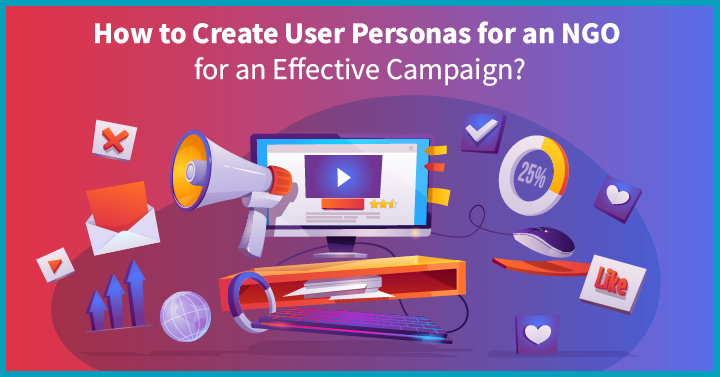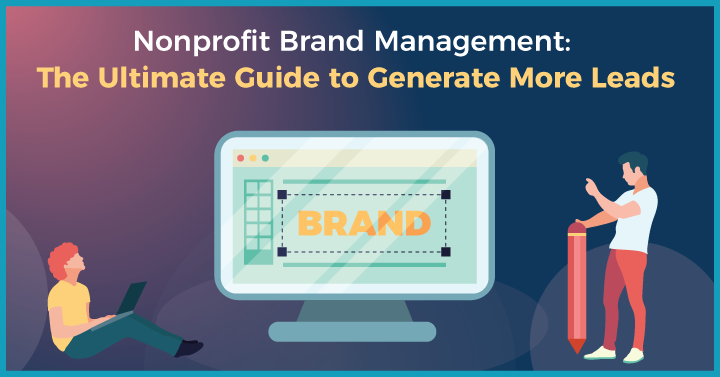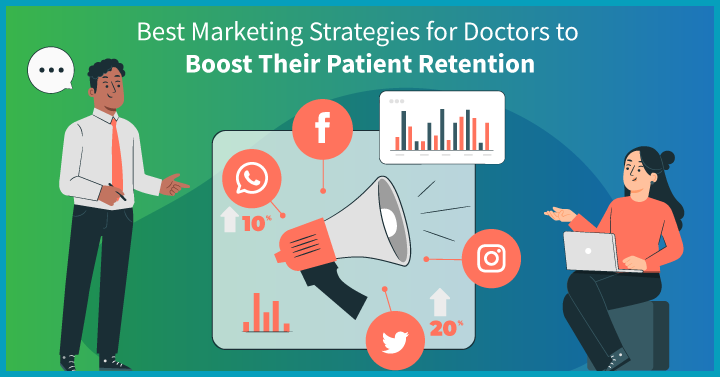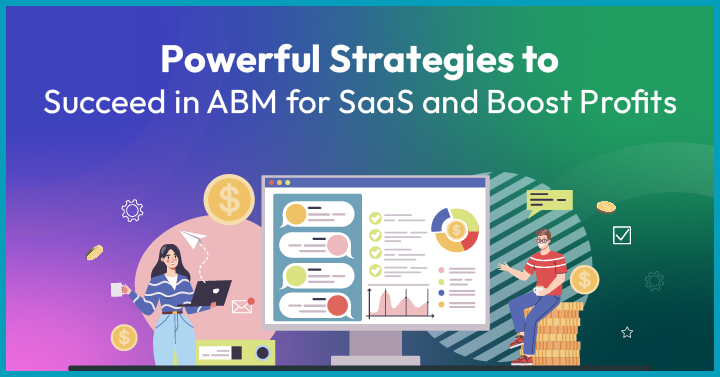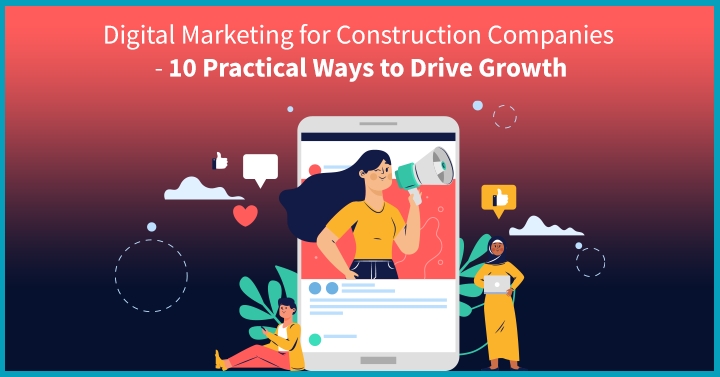According to a report by Forrester, the annual expenditure on marketing is expected to reach $4.7 trillion by 2025.
This substantial surge in spending indicates a significant rise in market competition that businesses will face in the coming years. As a result, traditional marketing approaches that focus only on lead generation are no longer sufficient to drive sustained growth and revenue.
Therefore, to thrive in this dynamic environment, businesses must adopt a result-driven strategy that distinguishes them from their counterparts.
Growth marketing is a powerful approach focusing on data-driven strategies, experimentation, and customer needs.
It goes beyond lead generation and takes a holistic view of the entire customer lifecycle from awareness to engagement, consideration, conversion, retention, and advocacy.
This blog explains growth marketing and highlights actionable insights and proven strategies to drive meaningful growth and higher revenue.
Let’s dive in!!
2. What is Growth Marketing?
Growth marketing is a data-driven strategy to accelerate business revenue by acquiring new customers, retaining existing ones, and converting them into brand advocates.
This agile marketing approach employs holistic methodologies to establish and maintain relationships with consumers at every stage of the customer lifecycle. In addition, by adopting techniques such as A/B testing and experimentation, it enables businesses to refine and implement more effective strategies to drive results.
Now that you understand growth marketing definition, let’s see how it benefits businesses:
3. Why is Growth Marketing Important for Business Growth?
It’s challenging to thrive in today’s rapidly changing business world without a strategy that keeps you ahead of your competitors and ensures sustainable growth. Growth marketing is one such approach that brings you desired results.
Here are some key reasons why it is essential for maximising business profitability-
1. Maximises return on marketing budget
Growth marketing enables businesses to achieve measurable results, such as increased traffic and revenue, even with limited resources. Through continuous testing and optimisation of marketing strategies, companies can effectively allocate their marketing budget and maximise their return on investment (ROI).
2. Focuses on acquisition and retention
Acquiring and retaining customers are essential drivers of business success. Growth marketing employs strategies to create buyer personas and develop tailored content that resonates with them. Additionally, it emphasises nurturing ongoing relationships with customers to foster loyalty and repeat business.
3. Drives meaningful engagement and boosts results
By leveraging relevant insights, growth marketing enables businesses to develop targeted marketing campaigns that reach the right audience at the right time. This approach helps companies enhance customer engagement, increasing loyalty and revenue over time.
4. Facilitates rapid experimentation and optimisation
Growth marketing involves rapid experimentation and optimisation. It helps businesses to identify the methods that bring results. By quickly testing different strategies and tactics, companies can learn what resonates with their audience and adjust strategies to improve performance.
5. Provides real-time insights and feedback
Growth marketing is a data-driven approach that helps organisations gain valuable insights into the performance of their campaigns and make informed decisions. With access to real-time data, businesses can invest resources rationally and iterate campaigns (if required) for maximum impact.
In a nutshell, growth marketing prioritises long-term customer value and aims for sustainable growth. However, growth hacking is also an alternative approach that has gained significant attention recently.
So, let’s deep dive to explore their key differences in detail.
4. Growth Marketing vs. Growth Hacking
Growth marketing and growth hacking are two approaches that aim to drive business growth, but they differ in their strategies, approach, and budget. Here are the key differences between both –
| Parameters | Growth Marketing | Growth Hacking |
|---|---|---|
| Approach | Focuses on nurturing prospects from initial awareness to becoming loyal customers. It employs a well-rounded approach to the entire customer life cycle. | Involves rapid experimentation and quick iterations to capitalise on emerging trends throughout the marketing process. |
| Strategy | Utilises a diverse mix of strategies, such as SEO, social media, email marketing, and content marketing, to effectively reach and engage the target audience. | Relies on unconventional tactics like referral/ viral marketing, freemium models, and other methods to generate instant buzz & acquire users. |
| Decision making | It places a strong emphasis on data-driven decision-making and involves continuous analysis, optimisation, and refinement of marketing efforts based on insights gained from data. | It is characterised by agile decision-making and involves identifying effective tactics through experimentation and implementing it rapidly to achieve growth targets. |
Though both approaches seem effective, growth marketing shines as a key tactic, considering the long-term goals of the company, budget, and resources.
Now, let’s examine how growth marketing strategies can be applied at each customer lifecycle stage.
5. Understanding Customer Life Cycle & KPIs
According to Deloitte, 72% of companies believe they can use analytics reports to keep a track on KPIs and improve their customer experience.
This testifies to the fact that analysing data & monitoring KPIs help gain deeper understanding of customers at different stages of the customer lifecycle. Here, you’ll gain deep understanding of the customer lifecycle and critical KPIs that play a vital role in enhancing your growth marketing results:
1. Awareness:
This is the first stage of the customer lifecycle, where customers become aware of a product, service, or brand through targeted advertising, content marketing, etc. The goal is to increase brand visibility and attract the attention of potential customers.
Here are some of the KPIs to tack in the awareness stage:
- Impressions – Measuring impressions helps determine the number of times your content is displayed, indicating potential reach and shareability.
- Total Reach – This KPI measures the overall exposure of your content to the target audience, reflecting an increase in brand awareness and expanding audience base.
- Website Traffic – It indicates the number of visitors to your website, providing an opportunity to create awareness about your products and services.
2. Engagement:
In this second stage of the customer lifecycle, the goal is to engage potential customers who have shown initial interest in the product or brand through personalised email marketing and social media campaigns.
The following KPIs can be used to measure engagement:
- Engagement Rate: This metric helps analyse how engaged your audience is with your content, indicating the level of interaction and interest.
- Click-through Rate: It measures the number of times your posts/links are clicked, providing insights into the value/relevance of your content to users.
- Website Sessions: Engaging sessions are the ones when users spend more time on your website, scroll through different pages, and explore products/services
3. Consideration:
During the consideration stage, prospects have progressed beyond awareness and are actively evaluating the product or service as a potential solution to their needs or problems.
Here are the KPIs to track for the consideration stage:
- Lead Generation: The total number of leads generated after the demo/consultation helps determine the effectiveness of your consideration campaigns.
- Open rate: The open rate of your personalised emails indicates if users are interested in buying your products or availing of your services.
- Return Visits: Monitoring repeat website visits indicates that users are considering your solution and revisiting it for further evaluation.
4. Conversion
In the conversion stage, a lead becomes a customer by purchasing or taking a desired action, such as signing up for a subscription, filling out a form, or becoming a member.
Here are some of the KPIs you can measure during the conversion stage:
- Conversion Rate: It is the percentage of leads that successfully convert into customers, indicating the effectiveness of your conversion strategies.
- Sales: Successful conversion strategies are the ones that can convert more leads into customers and hence enhance sales.
- ROI: Your conversion strategy is considered effective when it generates substantial returns against the amount invested in marketing campaigns.
5. Retention
Once a customer has made a purchase, the focus shifts to retaining them, encouraging repeat purchases, and fostering a long-term relationship, thereby increasing customer satisfaction and loyalty.
Below mentioned are the critical KPIs for the retention stage:
- Customer Churn Rate: If the customer churn rate is high, then it is likely that they are not satisfied with products or services.
- Customer Lifetime Value: Tracking the CLV helps measure the long-term value derived from each customer and guides retention efforts.
- Customer Satisfaction Score: This helps gauge how well your products/services meet customer expectations.
6. Advocacy:
The final stage of the customer lifecycle is advocacy, where customers become enthusiastic promoters of the brand or product. These advocates can influence potential customers’ decisions and contribute to expanding the customer base.
Here are the KPIs to rack during the advocacy stage:
- Referrals: The number of referrals received demonstrates the success of nurturing customers to the advocacy stage.
- Net Promoter Score: NPS measures the likelihood of customers recommending your brand to others.
Overall, growth marketing incorporates various targeted campaigns at different stages of the customer lifecycle to turn visitors into customers and, finally, brand advocates. Now, let’s learn how to implement a growth marketing strategy to boost results.
6. Marketing Strategy to Accelerate Revenue
Here is a step-by-step guide on how to create a growth marketing strategy that drive results –
1. Set Growth Goals
The first step in developing a growth marketing strategy is to set SMART goals that align with your overall business objectives. These goals outline the desired outcomes and serve as a roadmap for your sales and marketing efforts. Let’s delve into the process of determining the growth goals for your business –
1.1 Understand Short/Long Term Business Objectives
By aligning your growth marketing strategy with your overall business strategy, you can ensure that your marketing efforts are targeted toward achieving your short/long-term business goals. For example, your short-term goal could be to increase revenue by 20% within the next six months, while your long-term goal might be to become the market leader in your industry within three years. These goals provide a clear direction for your growth marketing efforts.
1.2 Set Sales/ Marketing Growth Goals
Once you’ve identified your objectives, you can set SMART sales and marketing growth goals. In line with the above example, your marketing goal could be to increase lead generation by 50% every quarter through targeted campaigns to support the 20% revenue increase in the next six months. While your sales goal can be to convert 30% of those leads into actual sales within a three-month period.
2. Analyse Business
The next critical step in developing an effective growth strategy is to analyse your business. This involves assessing various aspects such as its products or services, unique selling points, competitors, market trends, and customer base.
Here are the essential steps required to analyse your business and identify growth opportunities effectively –
2.1 Identify Target Market & Audiences
It’s essential to get a clear picture of demographic, geographic, psychographic, and behavioral characteristics that define your target audience. Further, you can segment them based on age, gender, location, income level, education, occupation, interests, and values. This approach allows you to tailor your marketing efforts and align your messaging to specific segments, maximising the impact of your strategies.
2.2 Conduct Competitive Research
Conducting competitive research is a crucial aspect of a growth marketing strategy. It involves assessing competitors’ strengths, weaknesses, product/service offerings, and marketing tactics. Additionally, it includes understanding competitors’ distribution channels, pricing, and brand reputation. This knowledge helps businesses to create a growth strategy that effectively positions their brand as a compelling choice in the market.
2.3 Conduct Keyword Research
Performing keyword research is a crucial step in a growth marketing strategy. It helps you understand your target audience’s search behavior and identify relevant keywords and search terms they use to find businesses like yours. Further, you should evaluate the metrics associated with each keyword, like search volume, competition level, and trend data. This will enable you to increase visibility in search engine results and attract genuinely interested users.
2.4 Determine Marketing Budget
Setting a realistic and sustainable budget that aligns with your business’s financial capabilities is vital to achieving your growth goals. It requires constant evaluation, adaptation, and refinement based on your goals, financial targets, and industry benchmarks. In addition, you should evaluate the performance of high-performing marketing channels and allocate your budget to digital media with the highest potential to effectively reach your target audience.
3. Develop a Growth Marketing Strategy
Once you have analysed your business and gained insights into your target audience, competitors, and market trends, the next step is to develop a growth marketing strategy. It involves setting goals and KPIs, developing a content strategy, and identifying the most effective marketing channels.
Let’s take a closer look at the steps involved in developing the same –
3.1 Set Customer Life Cycle KPIs
Setting Customer Life Cycle KPIs allows you to track the performance of your marketing efforts at each stage. It helps you understand the strengths and weaknesses of your strategies, optimise your marketing spend, and allocate resources effectively. By focusing on specific KPIs at each stage, you can identify bottlenecks, develop targeted campaigns, and drive growth.
3.2 Develop Messaging Strategy
Businesses must create a messaging strategy that effectively communicates their brand’s unique value proposition to the target market. Further, you can tailor your messaging to different marketing channels and specific audience segments. By understanding their distinct needs, preferences, and communication styles, businesses can customise their messaging and drive engagement and conversions.
3.3 Develop Content Strategy for Customer Life Cycle
It is crucial to build a comprehensive content strategy that drives engagement, conversion, retention, and advocacy throughout the customer life cycle. For that, you should determine the most effective content formats and channels to engage with your audience at each stage. This way, you can establish your brand as a thought leader, build a relationship with your audience, and ultimately drive business growth.
3.4 Develop Website Strategy
An optimised website engages visitors and drives desired actions, such as purchasing or filling out a form. To achieve this, it is crucial to strategically place compelling calls-to-action (CTAs) and optimise conversion paths on your website. Incorporating SEO best practices also enhance search engine rankings and drives more organic traffic. By regularly tracking metrics like traffic, engagement, conversion rates, and user behavior, you can gain valuable insights into what’s working well and areas that can be improved.
3.5 Identify Suitable Marketing Channels
One of the critical aspects of growth marketing is to identify the proper marketing channels where your target audience is active and understand how they prefer to consume information. Next, consider the channel’s reach, targeting options, and ability to convey your message effectively. For example, if you offer B2B SaaS products, LinkedIn may be suitable for showcasing your offerings. This approach helps create a focused and targeted marketing strategy that attracts new customers and generates a higher ROI.
3.6 Develop Campaign Strategy
To achieve your growth marketing goals and increase sales, crafting a campaign strategy that effectively drives engagement, conversion, retention, and advocacy is essential. For that, you should create a detailed timeline that outlines the various stages of your campaign, including pre-launch, launch, and post-launch activities. This enables you to allocate resources, set deadlines, and define critical campaign milestones that maximise results and drive business growth.
4. Implement a Growth Marketing Strategy
Once you have defined your target audience, set clear growth and revenue goals, conducted a competitive analysis, and identified the most effective marketing channels, the next step is implementing a growth marketing strategy.
To implement it, you can follow these steps –
4.1 Create a Plan
A comprehensive plan ensures effective management of marketing activities that accelerate your business’s growth and revenue. For example, if your growth marketing strategy includes leveraging social media, your plan can include details like content themes, posting schedule, engagement strategies, and targeted advertising campaigns for each social platform you’ll be using. This detailed growth marketing plan ensures a focused approach and maximises the impact of your marketing efforts on driving growth and generating revenue.
4.2 Track the Performance
After implementing your growth marketing strategy across all channels, tracking the performance of each campaign is crucial for maximising results. Some KPIs you should monitor include website traffic, conversion rates, social media engagement, email open and click-through rates, and customer acquisition costs. Thus, by leveraging performance data, businesses can make informed decisions to drive growth and boost revenue.
5. Monitor KPIs & Optimise Marketing
Regular tracking of KPIs and optimisation helps businesses understand which campaigns drive results and which need improvement. Let’s understand what steps are involved here:
5.1 Set Realistic Targets
You should set achievable targets for each KPI based on your business goals and previous performance and track them using tools like Google Analytics or social media analytics. These tools provide valuable insights into your website traffic, engagement, conversion, and other metrics.
For example, let’s say your current conversion rate is 2%; aiming for a 5% conversion rate within a specific timeframe may be a realistic target. It allows you to push for improvement while acknowledging your starting point and industry benchmarks.
5.2 Identify Areas of Improvement
By regularly monitoring your KPIs, you can identify areas where you can optimise your marketing efforts and experiment with different tactics and strategies. This approach enables you to adapt to your audience’s preferences, enhance engagement, and drive growth.
For instance, if your email open rates are low, you might try different subject lines to see if that improves your open rates. In addition, you can use A/B testing to test multiple variables and determine what works best for your audience.
5.3 Adjust your Marketing Strategy
To optimise the efforts of your growth marketing strategy, you should make changes to your approach based on insights, feedback, and data analysis. It involves refining messaging, adjusting the target audience, reallocating the budget, or experimenting with new tactics and channels.
For example, if certain landing pages have a high bounce rate, you should improve the user experience or align messaging with visitor expectations. This way, you can make targeted adjustments to enhance the performance of your marketing efforts.
7. How Can a Digital Marketing Agency Help?
A digital marketing agency plays a crucial role in accelerating business revenue through effective growth marketing strategies. They bring expertise, resources, and industry knowledge that helps businesses achieve rapid revenue growth.
With a comprehensive approach, you can effectively target the right audience, optimise conversion rates, nurture customer relationships, and drive revenue generation.
Growth Ganik is a full-stack digital agency specialising in growth marketing. We develop a tailored marketing strategy and allocate resources to optimise the efforts and achieve your business goals.
Are you looking to achieve steady growth for your business? Contact us to learn more about our growth marketing and advertising initiatives.












